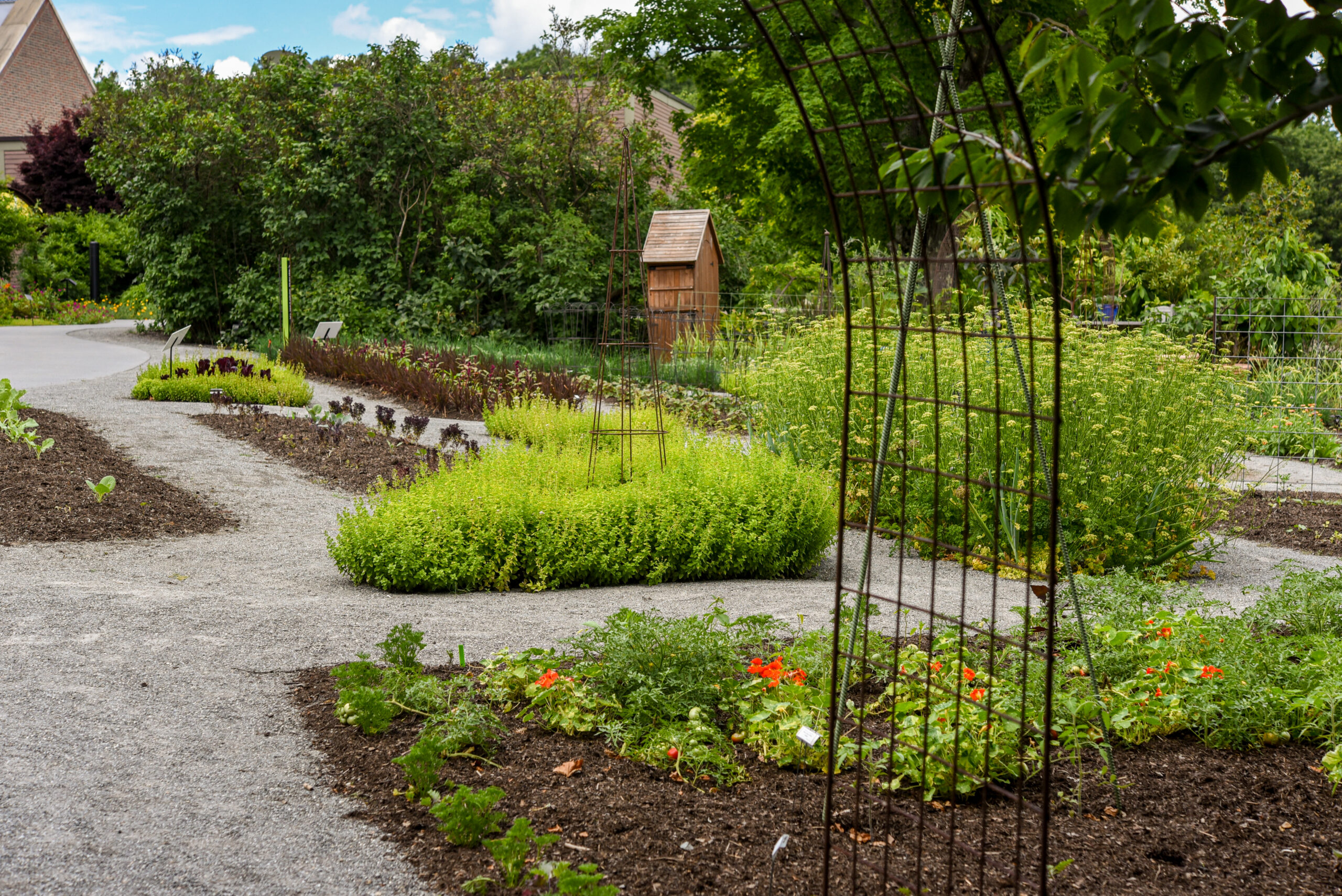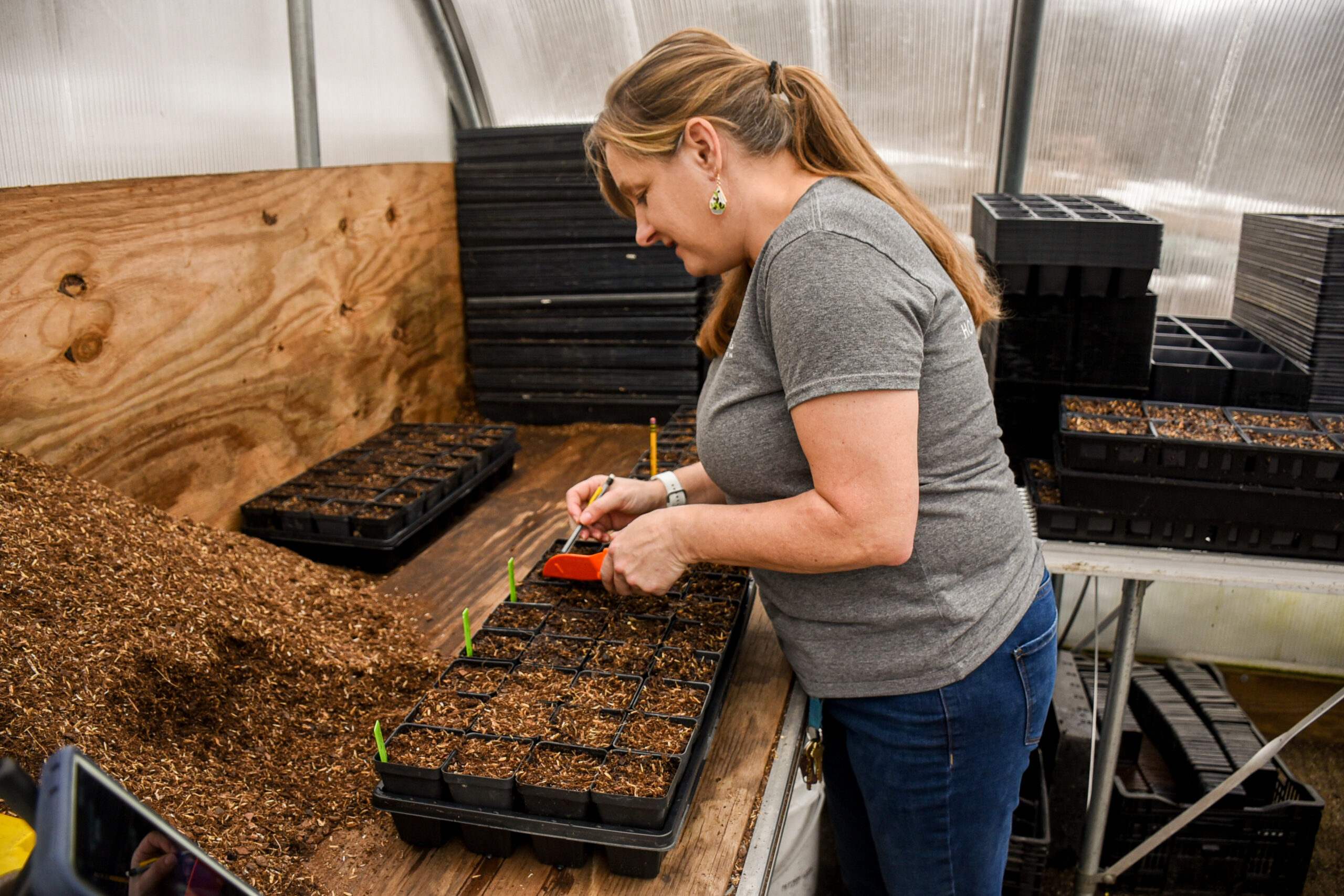By Megan Stouffer, New England Botanic Garden
July 2024
It takes a certain amount of creativity and determination to plan your entire vegetable garden layout under a specific theme. The plants need to be able to grow alongside one another and have enough space and the right conditions to thrive. It’s a puzzle of sorts, one that requires a lot of thought and planning to make sure everything fits just right. But that’s just what Formal Gardens Manager Dawn Davies does each year as she designs the Vegetable Garden.

Plants of all colors and textures grow in the Vegetable Garden.
It’s not hard to see why this space is a visitor favorite. As one of the oldest gardens on the property, the Vegetable Garden is both beautiful and functional, providing education while inspiring visitors to use different techniques and heirloom plants in their home gardens. Each year, the food grown in the garden is harvested and the majority is donated to the South Worcester Neighborhood Center, a nonprofit combatting food insecurity. Last year, 525 pounds of fresh, healthy produce was donated.
The ability to create both an interactive and aesthetic space takes a lot of experience and skill. Dawn has been at the Garden for 25 years and has overseen the Vegetable Garden for the last 23. In 2021, she played an instrumental role in expanding the Vegetable Garden through a grant from the Massachusetts Society for Promoting Agriculture. She frequently gives talks on topics like “elegant edibles” to garden clubs and currently serves as Chair for the American Public Garden Association’s Food and Agriculture Committee. You may think this wealth of experience means she knows everything about vegetable gardening, but Dawn will be the first to tell you she doesn’t, and she’s glad. She says that learning never truly ends when you’re gardening, especially not with all the cool new things to discover in the world of fruits, vegetables, and herbs. Whether it’s new varieties of plants, a new growing technique, or sustainable gardening practice, Dawn tests out each one with renewed enthusiasm and the hope to showcase them in next year’s garden.

Dawn starts seeds in the growhouse months before they get planted in the garden beds.
This year‘s Vegetable Garden theme is “From Seed to Table,” and it covers everything from growing a vegetable from seed to maturity, then saving that seed to use again the following year. The interpretation lining the beds provides helpful information for the gardener at any level — from the difference between an annual and perennial plant to crops that need to be vegetatively propagated as opposed to those propagated by seed. The beds themselves showcase exactly how these plants grow and interact with one another. For example, indirect versus direct planting is explored in one of the garden’s beds. A lot of warm–season plants can’t tolerate any frost and usually need a little head start to have a long enough season to produce fruit. These plants, like peppers, eggplant, tomatoes, and okra, are started indoors, in the Garden’s greenhouse, prior to the direct planting of other plants like carrots and radishes, whose seed is planted directly into the beds of the garden.
People don’t necessarily associate vegetables with beauty, but the eye-catching purple and white swirls on an eggplant are just one example of how the right vegetable plant can change that mindset. This is only one of the many things Dawn hopes visitors take away from exploring the Vegetable Garden. Another is great conversations. Dawn, like many of her coworkers on the horticulture team, enjoys hearing visitors reading signage in the garden, commenting to one another about all the things they didn’t know about, or even an “I told you so” when the name of a plant is revealed.
About the Author
Megan Stouffer is the Digital Marketing Coordinator at New England Botanic Garden at Tower Hill located in Boylston, MA. She has been with the organization since 2021 and primarily works on the Garden’s social media and email marketing content. Megan earned her BS in Public Relations at Slippery Rock University and is finishing her MS in Environmental Studies and Sustainability at Unity Environmental University. Her professional interests include climate change communication, environmental interpretation, and inclusive storytelling.
